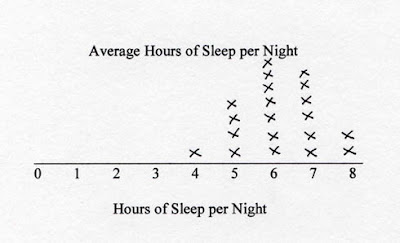
A stem-and-leaf plot is a display that organizes data to show its shape and distribution. This plot map shows the average hours of sleep per night, over hours of sleep per night. This person is getting a nice amount of sleep, averaging around 6 hours per night. Although, it does vary depending on age and amount of physical activity during the day. It is reported that teenages and young adults need around 8 hours of sleep per night but they typically do not get it, especially college students. This map would be more useful if it provided the information of the person or people that were involved in giving the information.
URL:http://www.qacps.k12.md.us/cms/sci/tools/MATHTBX.HTM











































